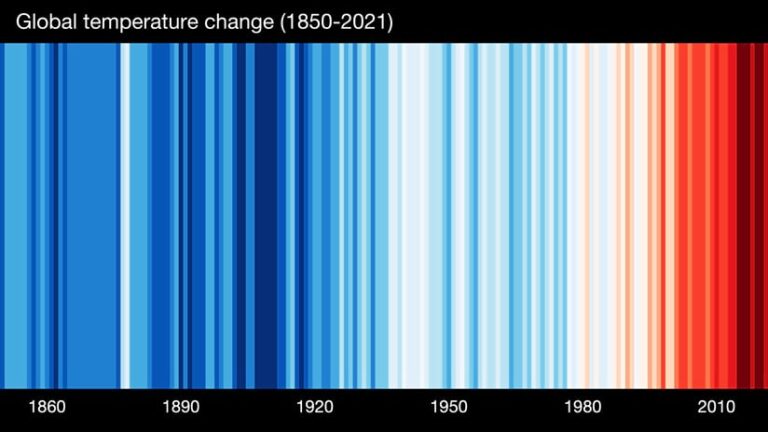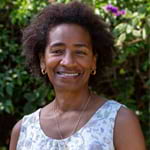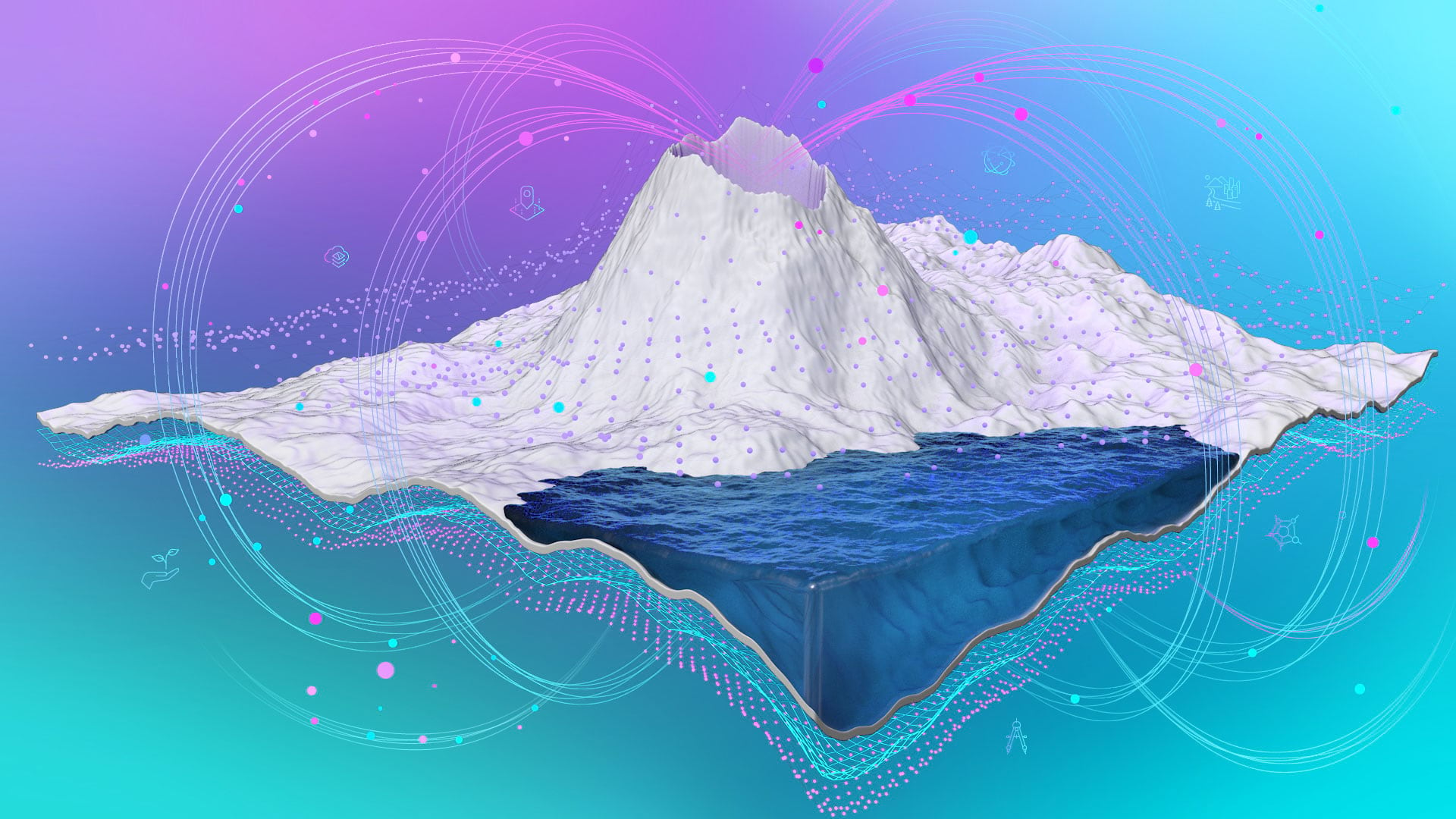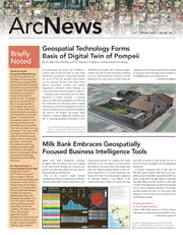Scientists are trained to cultivate intellectual distance from their topics. Physical geographers and climate scientists, like myself, are no exception. We have historically treated the climate as if it were a complex phenomenon that functions on its own—largely beyond human control—and with a variability that we can objectively measure, describe, and analyze. We have studied how a changing climate affects human comfort and survival, and we have analyzed it to prepare for droughts, floods, and the like. But rarely have we reduced our separation and considered more deeply the human causes—and impacts—of the changes we observe.
To be sure, abstraction and distancing have a role to play in grasping the implications of climate change. For example, University of Reading climate scientist Ed Hawkins’s warming stripes are abstract visualizations that show, quite viscerally, the dramatic trend of warming over the last 120 years, approximately. Yet the urgency of climate justice—the recognition that climate change affects underprivileged and underserved communities more acutely than other populations—demands more of physical geographers and climate scientists. We can no longer ignore the inequities of climate change. We must take an approach to science that recognizes and redresses the ways in which our scientific methods and practices contribute to climate injustice. Geography is at the heart of that approach.

We Are Part of the Problem—and the Solution
Earth observation (EO) is a powerful tool for measuring the physical impacts of climate change. EO refers to any effort to bring together data about the earth—most typically, satellite-based remote sensing, but also airborne observations, fixed sensors, cameras, and other recording devices. By definition, these are distance-based methods for gaining insight. They are routinely used to measure climate and terrain changes, ice flow and loss, tree canopies, and habitats—as well as human phenomena such as migration and humanitarian crises. EO data is incorporated into maps that are used for a variety of purposes, from planning to policy making.
Human-induced climate change, however, challenges everything we thought we knew about how to best apply EO methodologies. Human beings are directly implicated in the profound changes occurring with earth’s climate—and some are more heavily implicated than others, especially at the institutional level. We cannot stop observing and measuring. But as we are learning, remotely conducted measurements alone cannot lead us to actionable conclusions. We also need methods and practices that support deeper inquiry into how and why the causes and impacts of climate change are unequally distributed, rendering most vulnerable those who are already disadvantaged and are least responsible for the greenhouse gas emissions that drive climate change. Climate justice—which recognizes the historical underpinnings of this uneven privilege and privation and how these inequities are further exacerbated by climate change—is a movement as well as a way of approaching the climate crisis.
In the kind of climate science we need to practice now, physical scientists must know what the people working to advance climate justice need. We must understand who is applying the datasets and models we construct and what they are using them for—both now and in the future. Also, these groups often don’t need additional research. Rather, they need financial and technical resources—such as funding for environmental cleanup and carbon reduction programs—to be redistributed so they can tackle problems whose causes and consequences are already sufficiently clear, especially to those who are most affected by them. So we have to think in terms of community data needs and bear in mind the relationships between producers of scientific knowledge and affected communities.
More generally, physical scientists need to pay more attention to the role that scientific representations of climate change play in obscuring climate injustice. This is an ongoing issue. For example, responsibility for climate change is often attributed to humans in general rather than to a specific set of powerful, human-run institutions that have a long track record of harming, exploiting, and extracting wealth from colonized and marginalized people and places. Taking this context into consideration, climate change might be more productively addressed as a symptom rather than a cause. We, rightfully, talk about the disproportionate impacts of climate change on marginalized groups, but this framing can elide the underlying processes that produce both climate change and systemic marginalization.
A recent example of a study that exposes these connections is a set of maps that Antenor Vaz, formerly of the Brazilian government’s agency for Indigenous affairs (known by its Brazilian acronym, FUNAI), put together in 2017. They show Indigenous territories in the Amazon overlaid with oil and gas leases, mining claims, hydroelectric dams, and areas suffering from deforestation. The maps demonstrate that deforestation and other environmental degradation go hand in hand with the exploitation of Indigenous lands by outside actors—and that the impacts cannot simply be stemmed or undone through private or even public conservation efforts without ensuring protection for the people and their lands.
A Geographic Approach to Linking Climate Science and Climate Justice
In geography, an emerging body of work called critical physical geography may be used as a lens and guiding framework for bringing climate justice into climate science. Critical physical geography advocates paying more reflexive attention to how knowledge is produced—that is, how we conceptualize our research and the methods we use. It argues that social inequities and power relations are implicitly woven throughout what we study and should not be ignored if our goal is to produce more robust and valuable results.
A recent paper by geographer Dr. Núbia Beray-Armond puts urban climatology at the center of this discussion. As she argues, the city is where human impacts on the landscape and climate are most concentrated and where measurable and perceived climate change was noted well before global climate change was widely confirmed. Even today, the temperature increases attributed to large cities—what’s known as the urban heat island—are larger than the average increase in temperature across the globe. And cities are major sites of greenhouse gas emissions. Cities are also where much work on environmental justice is done because of how unequally distributed the negative impacts of high temperatures and air pollution (among other things) are in urban areas.
Critical urban climatology draws on the tenets of critical physical geography to argue that we need both urban climatology and environmental justice to fully understand urban climates. This is because these spaces are shaped by the nature of urban energy budgets (the balance of how energy from the sun is used and lost in urban areas), variations in air quality, and their thermal and moisture characteristics—as well as by race, gender, class, and the legacies of colonialism.
Bringing Climate Science Closer to Understanding
There is so much more that physical and climate scientists, including geographers, need to learn about how we practice and use our science. We have made great strides in our understanding of the physical nature of climate and climate change. However, our understanding is limited by the fact that we do not incorporate the human element well enough.
The divide between these perspectives is nothing new, as Dr. Mei-Po Kwan, geography professor and director of the Institute of Space and Earth Information Science at the Chinese University of Hong Kong, pointed out in her 2008 paper, Beyond Difference: From Canonical Geography to Hybrid Geographies. But this must change because our environments are no longer only physical or only human. Was it ever so?
Bridging the gap between physical and human geography and manifesting it in our applications and practice will not only better address climate justice, but it will also improve our science.


